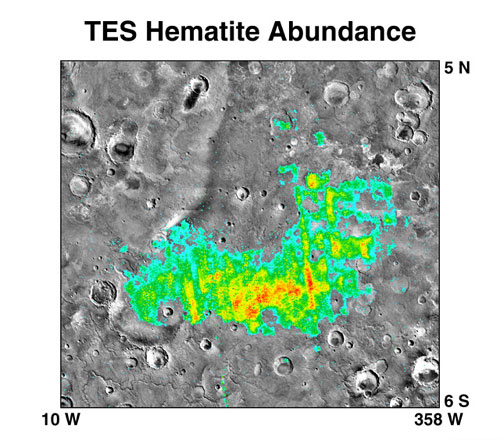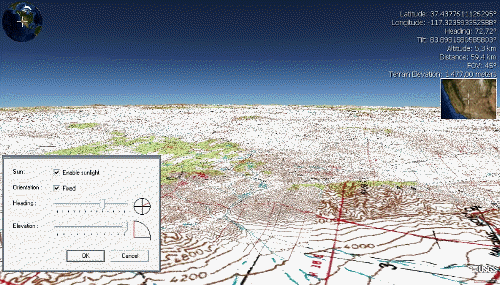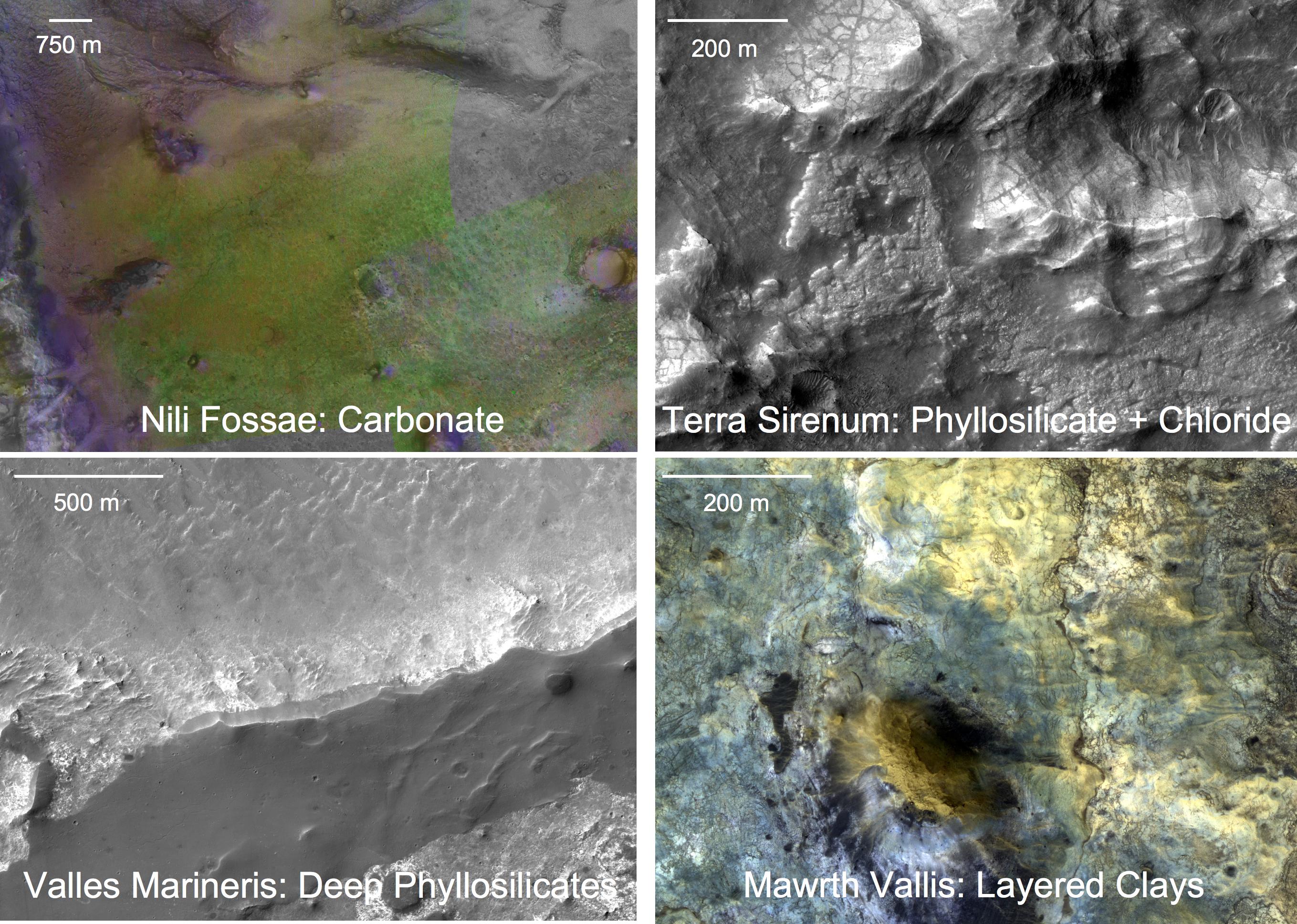|
Koga (crater)
Koga is an impact crater on Mars, approximately 19 kilometers in diameter. It is located at 29.3°S, 103.8°W, north of the crater Virrat and northeast of the crater Dinorwic. To the north is the crater Nhill. It is named after a town in Tanzania, and its name was approved by the International Astronomical Union in 1991.''NASA World Wind'' 1.4. NASA Ames Research Center, 2007. According to a surface age map of Mars based on US Geological Survey data, the area around Koga is from the Noachian epoch The Noachian is a system (stratigraphy), geologic system and early geologic timescale, time period on the planet Mars characterized by high rates of meteorite and asteroid Impact event, impacts and the possible presence of abundant surface water. ..., which places the area's age at 3.8 to 3.5 billion years ago. Sharp blocks and cliffs poke through a mantle of fine material located at the bottom of the crater. At the deepest part of the crater, it is about 5,200 meters in elevation a ... [...More Info...] [...Related Items...] OR: [Wikipedia] [Google] [Baidu] |
Thermal Emission Imaging System
The Thermal Emission Imaging System (THEMIS) is a camera on board the 2001 Mars Odyssey orbiter. It images Mars in the visible and infrared parts of the electromagnetic spectrum in order to determine the thermal properties of the surface and to refine the distribution of minerals on the surface of Mars as determined by the Thermal Emission Spectrometer (TES). Additionally, it helps scientists to understand how the mineralogy of Mars relates to its landforms, and it can be used to search for thermal hotspots in the Martian subsurface. THEMIS is managed from the Mars Space Flight Facility at Arizona State University and was built by the Santa Barbara Remote Sensing division of Raytheon, Raytheon Technologies Corporation, an American multinational corporation, multinational list of conglomerates, conglomerate headquartered in Waltham, Massachusetts. The instrument is named after Themis, the goddess of justice in ancient Greek mythology. Infrared camera THEMIS detects thermal ... [...More Info...] [...Related Items...] OR: [Wikipedia] [Google] [Baidu] |
Mars
Mars is the fourth planet from the Sun. It is also known as the "Red Planet", because of its orange-red appearance. Mars is a desert-like rocky planet with a tenuous carbon dioxide () atmosphere. At the average surface level the atmospheric pressure is a few thousandths of Earth's, atmospheric temperature ranges from and cosmic radiation is high. Mars retains some water, in the ground as well as thinly in the atmosphere, forming cirrus clouds, frost, larger polar regions of permafrost and ice caps (with seasonal snow), but no liquid surface water. Its surface gravity is roughly a third of Earth's or double that of the Moon. It is half as wide as Earth or twice the Moon, with a diameter of , and has a surface area the size of all the dry land of Earth. Fine dust is prevalent across the surface and the atmosphere, being picked up and spread at the low Martian gravity even by the weak wind of the tenuous atmosphere. The terrain of Mars roughly follows a north-south ... [...More Info...] [...Related Items...] OR: [Wikipedia] [Google] [Baidu] |
Impact Crater
An impact crater is a depression (geology), depression in the surface of a solid astronomical body formed by the hypervelocity impact event, impact of a smaller object. In contrast to volcanic craters, which result from explosion or internal collapse, impact craters typically have raised rims and floors that are lower in elevation than the surrounding terrain. Impact craters are typically circular, though they can be elliptical in shape or even irregular due to events such as landslides. Impact craters range in size from microscopic craters seen on lunar rocks returned by the Apollo Program to simple bowl-shaped depressions and vast, complex, multi-ringed impact basins. Meteor Crater is a well-known example of a small impact crater on Earth. Impact craters are the dominant geographic features on many solid Solar System objects including the Moon, Mercury (planet), Mercury, Callisto (moon), Callisto, Ganymede (moon), Ganymede, and most small moons and asteroids. On other planet ... [...More Info...] [...Related Items...] OR: [Wikipedia] [Google] [Baidu] |
Virrat (crater)
Virrat is an impact crater on Mars, southwest of the crater Dinorwic and northeast of Clantas Fossae. To the north are the craters Koga and Nhill. The name was approved in 1991 by the International Astronomical Union, after Virrat, a town in Finland Finland, officially the Republic of Finland, is a Nordic country in Northern Europe. It borders Sweden to the northwest, Norway to the north, and Russia to the east, with the Gulf of Bothnia to the west and the Gulf of Finland to the south, ....'' NASA World Wind'' 1.4. NASA Ames Research Center, 2007. According to a surface age map of Mars based on US Geological Survey data, the area around Virrat is from the Noachian epoch, which places the area's age at 3.8 to 3.5 billion years ago. At the highest point on its rim, it is about above zero altitude, and it is about at the crater bottom, giving it a depth of . References Impact craters on Mars Thaumasia quadrangle {{Mars-crater-stub ... [...More Info...] [...Related Items...] OR: [Wikipedia] [Google] [Baidu] |
Dinorwic (crater)
Dinorwic is a Martian impact crater, approximately 51 kilometers in diameter. It is named after the town in Ontario, Canada. Its name was approved by the International Astronomical Union in 1991.''NASA World Wind'' 1.4. NASA Ames Research Center, 2007. According to a surface age map of Mars based on US Geological Survey data, the area around Dinorwic is from the Noachian epoch, which places the area's age at 3.8 to 3.5 billion years ago. At the crater's rim, it is about 7,600 meters above zero altitude, and it is about 5,950 meters above zero altitude at its floor, giving it a depth of 1.6 kilometers. It is located northeast of the crater Virrat Virrat (; ) is a town and municipality of Finland. Part of the Pirkanmaa region, it is located north of Tampere and west of Jyväskylä. Virrat is from Helsinki. The town has a population of () and covers an area of of which is water. The ... and north of the crater Tugaske. To the northeast of Dinorwic is the crater Caxias, ... [...More Info...] [...Related Items...] OR: [Wikipedia] [Google] [Baidu] |
Nhill (crater)
Nhill is a town in the Wimmera, in western Victoria, Australia. Nhill is located on the Western Highway, halfway between Adelaide and Melbourne. At the , Nhill had a population of 1,749. "Nhill" is believed to be a Wergaia word meaning "early morning mist rising over water" or "white mist rising from the water".''The Horsham Times'', "The discovery of Nhill", 2 June 1944, p. 4. Nhill is the administrative headquarters for Shire of Hindmarsh and residents are mainly employed in either farming or food processing, most notably in grain and fowl. The town is home to a community of Karen people, the first of whom came to Australia as refugees, and who settled in Nhill in the early 2010s to work at the Luv-a-Duck food processing facility. In 2012, there were over 100 Karen residents in Nhill. History The formally recognised traditional owners for the area in which Nhill sits are the Wotjobaluk, Jaadwa, Jadawadjali, Wergaia and Jupagik Nations. These Nations are represented by ... [...More Info...] [...Related Items...] OR: [Wikipedia] [Google] [Baidu] |
Tanzania
Tanzania, officially the United Republic of Tanzania, is a country in East Africa within the African Great Lakes region. It is bordered by Uganda to the northwest; Kenya to the northeast; the Indian Ocean to the east; Mozambique and Malawi to the south; Zambia to the southwest; and Rwanda, Burundi, and the Democratic Republic of the Congo to the west. According to a 2024 estimate, Tanzania has a population of around 67.5 million, making it the most populous country located entirely south of the equator. Many important hominid fossils have been found in Tanzania. In the Stone and Bronze Age, prehistoric migrations into Tanzania included South Cushitic languages, Southern Cushitic speakers similar to modern day Iraqw people who moved south from present-day Ethiopia; Eastern Cushitic people who moved into Tanzania from north of Lake Turkana about 2,000 and 4,000 years ago; and the Southern Nilotic languages, Southern Nilotes, including the Datooga people, Datoog, who originated fro ... [...More Info...] [...Related Items...] OR: [Wikipedia] [Google] [Baidu] |
International Astronomical Union
The International Astronomical Union (IAU; , UAI) is an international non-governmental organization (INGO) with the objective of advancing astronomy in all aspects, including promoting astronomical research, outreach, education, and development through global cooperation. It was founded on 28 July 1919 in Brussels, Belgium and is based in Paris, France. The IAU is composed of individual members, who include both professional astronomers and junior scientists, and national members, such as professional associations, national societies, or academic institutions. Individual members are organised into divisions, committees, and working groups centered on particular subdisciplines, subjects, or initiatives. the Union had 85 national members and 12,734 individual members, spanning 90 countries and territories. Among the key activities of the IAU is serving as a forum for scientific conferences. It sponsors nine annual symposia and holds a triannual General Assembly that sets policy ... [...More Info...] [...Related Items...] OR: [Wikipedia] [Google] [Baidu] |
NASA World Wind
NASA WorldWind is an open-source (released under the NOSA license and the Apache 2.0 license) virtual globe. According to the website, "WorldWind is an open source virtual globe API. WorldWind allows developers to quickly and easily create interactive visualizations of 3D globe, map and geographical information. Organizations around the world use WorldWind to monitor weather patterns, visualize cities and terrain, track vehicle movement, analyze geospatial data and educate humanity about the Earth." It was first developed by NASA in 2003 for use on personal computers and then further developed in concert with the open source community since 2004. a web-based version of WorldWind is available online. An Android version is also available. The original version relied on .NET Framework, which ran only on Microsoft Windows. The more recent Java version, WorldWind Java, is cross platform, a software development kit (SDK) aimed at developers and, unlike the old .NET ver ... [...More Info...] [...Related Items...] OR: [Wikipedia] [Google] [Baidu] |
US Geological Survey
The United States Geological Survey (USGS), founded as the Geological Survey, is an agency of the U.S. Department of the Interior whose work spans the disciplines of biology, geography, geology, and hydrology. The agency was founded on March 3, 1879, to study the landscape of the United States, its natural resources, and the natural hazards that threaten it. The agency also makes maps of planets and moons, based on data from U.S. space probes. The sole scientific agency of the U.S. Department of the Interior, USGS is a fact-finding research organization with no regulatory responsibility. It is headquartered in Reston, Virginia, with major offices near Lakewood, Colorado; at the Denver Federal Center; and in NASA Research Park in California. In 2009, it employed about 8,670 people. The current motto of the USGS, in use since August 1997, is "science for a changing world". The agency's previous slogan, adopted on its hundredth anniversary, was "Earth Science in the Public S ... [...More Info...] [...Related Items...] OR: [Wikipedia] [Google] [Baidu] |
Noachian Epoch
The Noachian is a system (stratigraphy), geologic system and early geologic timescale, time period on the planet Mars characterized by high rates of meteorite and asteroid Impact event, impacts and the possible presence of abundant surface water. The absolute age of the Noachian period is uncertain but probably corresponds to the lunar Pre-Nectarian to Early Imbrian periods of 4100 to 3700 million years ago, during the interval known as the Late Heavy Bombardment. Many of the large impact basins on the Moon and Mars formed at this time. The Noachian Period is roughly equivalent to the Earth's Hadean and early Archean eons when Earth's first life forms likely arose. Noachian-aged terrains on Mars are prime Lander (spacecraft), spacecraft landing sites to search for fossil evidence of extraterrestrial life, life. During the Noachian, the atmosphere of Mars was denser than it is today, and the climate possibly warm enough (at least episodically) to allow rainfall. Large lakes and riv ... [...More Info...] [...Related Items...] OR: [Wikipedia] [Google] [Baidu] |






